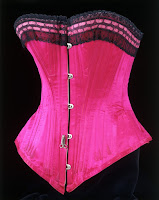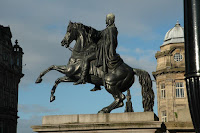The word amateur is derived from the French word meaning ‘one who loves’ or ‘lover’ – which in turn comes from the Latin word ‘Amator’. So an amateur jockey is someone who participates in horse races because they love the sport, but without pursuing it for financial gain – which, in my experience, is a bit like most punters.
Amateur jockeys can ride against professionals if they wish, although they’re not entitled to a share of the prize money if they win (this rule doesn’t affect the owner of the horse or the trainer – who get their usual share of the spoils). There are also a number of races which are restricted to amateurs and some (called Hunter Chases) which are perceived to be for amateur horses.
So how do we define an amateur horse - is it a four-legged beast that loves horses so much that it wants to gallop for 3 miles over obstacles? Or is it a horse which declines any reward, barring the odd carrot, for winning? It’s difficult to say because, for the time being, professional racehorse trainers are allowed to enter any horse in their yard in a Hunter Chase as long as it has taken a defined break from racing in ‘normal' races under 'rules’. The break might only be a couple of months - or up to a year for the winner of a Class 1 or 2 race.
The entry criteria for Hunter Chases has caused a bit of chatter in recent weeks, particularly in the north following Wonderful Charm’s victories at Musselburgh on 4th February and Haydock a fortnight later. Wonderful Charm is a 153-rated chaser trained by Paul Nicholls and, having been campaigned at graded level until last season, is now qualified to run in the amateur riders equivalent of the Gold Cup: The Cheltenham Foxhunters’ Steeplechase. Is it in the spirit of the sport, ask some of the grass-roots jumping folk, that a top-trainer like Paul Nicholls can enter horses in the amateur sphere?
But there are difficulties in ruling against horses like Wonderful Charm. Firstly, if he had changed hands and entered an ‘amateur’ yard, would there be any objection to the horse competing in Hunter Chases? And then, what if he stayed in the yard, but was sold to an enthusiastic owner-rider – like the Nicholls trained Mon Parrain, who’s entered for a Hunter Chase at Fontwell Park on Sunday. Isn’t it a good thing for amateur riders to have professional mentors to guide them on their way? I think it was the right approach for Victoria Pendleton - and she definitely qualified as an amateur jockey, despite her professionalism on the saddle of a bike.
Hunter Chases and Point-to-Points are recognised as providing valuable experience for both young riders and promising young horses. It’s usually considered better if they aren’t paired together – young riders are often mounted on older horses, sometimes referred to as school-masters, many of which have previously shown reliable form under ‘rules’. Somehow, it therefore seemed appropriate that the brothers Sam and Willie Twiston-Davies (both now successful professional jockeys) started their careers riding as amateurs on the same reliable horse – the fantastic (but not top class) Baby Run, who was of course trained by their Gold Cup winning father.
It’s difficult to write rules that cater for the spirit of the sport. However, having listened to several respected people that know and love the sport (Amo, Amas, Amat - I love, you love, he /she loves), I think there should be a new rule whereby every horse that runs in a Hunter Chase has to run in at least two Point-to-Points first. Once the horse is qualified one season, it should be able to continue running in Hunter Chases in subsequent seasons – unless it has a run under ‘rules’, in which case it should have to qualify once again.
Regardless of the rules, there are some reassuring statistics for defenders of the Corinthian spirit: in the last five years, just three professionally trained horses have made it into the top four placed horses in the Cheltenham Foxhunters Steeplechase and there have been no professionally trained winners – which suggests that, in racing, love really does (usually) conquer all.
This week’s selection is The Dutchman at Newcastle on Saturday.




